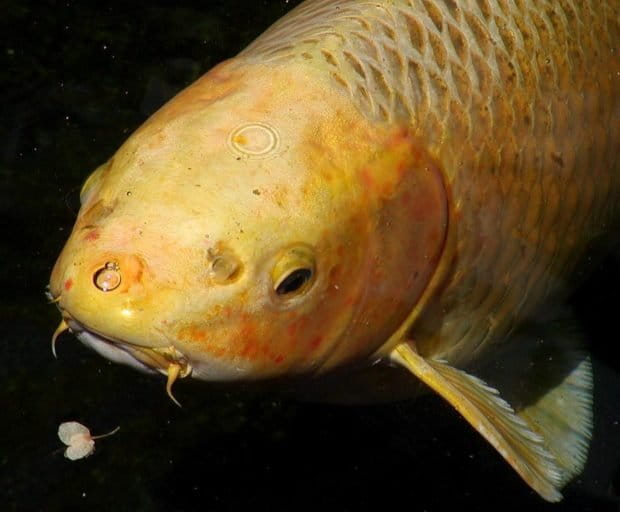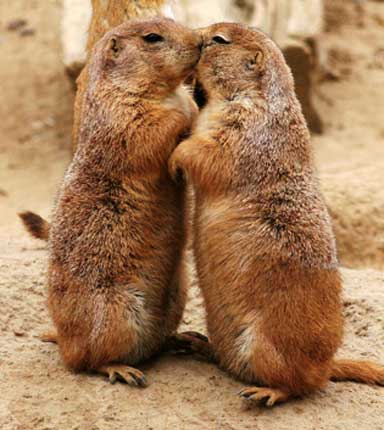- The exotic animal trade is a multi-billion dollar industry, and the US is the world’s leading importer. While the US government is on the alert for well known animal-transmitted diseases, there is no mandatory health surveillance for most animals coming though US ports for commercial distribution.
- Live animal imports could bring new diseases into the US and infect endemic wildlife, with devastating consequences as, for example, was seen with the worldwide exposure of amphibians to Chytrid fungus which resulted in the decline of more than 200 species.
- Elizabeth Daut is drawing on her training as a veterinarian and her extensive experience with wildlife to create a computer model that evaluates the risk of importing infectious diseases to the US via the exotic animal trade.
- Predictions produced by her model could help prioritize which species and exporting countries might warrant extra attention at ports of entry. With a better understanding of disease risks, government agencies could improve surveillance and develop better infectious disease prevention plans.

The legal commercial exotic animal trade is a booming enterprise that ships ornamental fish, mammals, birds, reptiles and amphibians around the world. These pets, livestock and other animals can carry unexpected infectious diseases from their homelands. If these non-native species escape or are released to the wild, they can create epidemics among susceptible endemic wildlife.
Four US agencies oversee live animal imports, but there is currently no systematic screening for disease in most live animal imports. The majority of animals processed through American ports for the pet industry fall under the aegis of the US Fish and Wildlife Service, which has no authority to conduct health inspections. Livestock imports are regulated by the US Animal and Plant Health Inspection Service (APHIS), with oversight by the Department of Homeland Security’s Customs and Border Protection. Species known to carry certain diseases (rabies in dogs, or tuberculosis in monkeys, for example) are monitored by the Centers for Disease Control and Prevention.
According to a 2010 report from the US Government Accountability Office, a lack of interagency collaboration creates gaps in health surveillance that could leave native wildlife and people exposed to disease. These risks could potentially be enormous. A single fungal disease, Chytrid, for example, devastated more than 200 amphibian species worldwide.
A related pathogen, Batrachochytrium salamandrivorans, originating with the Asian salamander trade, wreaked similar havoc on native populations in the Netherlands and Belgium. If this fungus gains a foothold in the US — a salamander biodiversity hotspot — experts fear entire species could be wiped out.
“There’s been a lot of attention focused on the human health risks from wildlife disease,” says veterinarian Elizabeth Daut. “While that’s obviously important, nobody is really talking about the risks these exotic imports pose for wildlife.”

Daut is delving into the dynamics and consequences of the spread of infectious diseases by the exotic pet trade, through a post-doctoral project with the National Socio-Environmental Synthesis Center at the University of Maryland.
She is using US Department of Agriculture methodology as part of the basis for her model — the agency routinely inspects plants from other countries and also helps improve plant nursery practices in nations at risk for exporting pathogens. Daut is developing a computer algorithm to predict which countries are at the highest risk of exporting infectious diseases through birds, fish, amphibians, reptiles and mammals.
Mongabay: How did practicing wildlife medicine lead you to modeling disease risks from the pet trade?
Daut: The foundation for this work came from earlier field experiences in Ecuador where I spent ten years, starting with the Peace Corps right after graduation from vet school at Cornell University College of Veterinary Medicine in New York. I set up an NGO to improve animal welfare and combat the illegal wildlife trade and became an honorary inspector for Ecuador’s Ministry of Environment.
I knew I wanted to work with issues in the wildlife trade when I came back to the US for my doctoral studies in the Applied Biodiversity Science Program at Texas A&M University. I did my dissertation research in Peru, looking at the role of trade in the spread of infectious disease within the country, specifically when animals were returned to native wildlife populations.

In Peru, when authorities confiscate illegally traded animals, they often don’t have the facilities or expertise to care for them. The rehab centers and zoos are full. So these animals, already under the stress of being captured and taken to markets where all kinds of creatures are kept together in poor hygienic conditions, are released back into the wild without any health screening. I published a paper that modeled what could happen [regarding the spread of disease] specifically in the parrot trade.
A lot of attention already goes toward emerging zoonotic sicknesses, which can be transmitted from animals to people. I’m now focused on assessing the risk to endemic animals from infectious disease imported along with exotic pets.
Mongabay: How did you create the model for the study?
Daut: In trying to make predictions about which countries will have the highest probability of exporting an infected animal, I started with the US Fish and Wildlife Service (USFWS) import data for wild and exotic animals from the years 1999 to 2015. During those 17 years, most of the world, a total of 223 countries and territories, sent animals to the US at least once.

The USFWS data includes each [exotic] animal species, the numbers of animals, where they came from, and the port of entry. With the exception of fish, which are generically tagged as freshwater or marine, there’s good data down to the species level, and so I created two models: a terrestrial and an aquatic version.
While we don’t have data about diseases in the exotic animals, we do know the 118 diseases reportable to the World Organization for Animal Health (OIE). These diseases include avian influenza, West Nile fever, and infection with Batrachochytrium dendrobatidis. I used the OIE disease data as a proxy and made the assumption that factors influencing disease in agricultural animals are roughly the same for exotic animals.
I then included about 60 socio-economic, demographic and ecological factors into the algorithm that could influence a country’s ability to respond to disease outbreak such as the number of veterinarians per country, World Bank indicators like GDP, and factors such as the percentage of forested area that could influence exposure to infectious pathogens. I also considered annual precipitation and other ecological factors that could facilitate the spread of infectious disease.
Our first step was to come up with a list of exporting countries with the highest predicted number of OIE reportable disease outbreaks for terrestrial animals.
We then used a simulation model to estimate the distribution of diseases for exotic animals being exported from these countries. Though the model doesn’t predict the spread of specific diseases, it does assess the risk of a generic infectious pathogen.
The fish model, which is just being finished, is much more simplistic. You really need to know the animal species to link to diseases.
Next, I need to run the numbers again to see if the predictions make sense. One big limitation of this study is that all the OIE reported diseases are self-declared.

Mongabay: What happens once you’ve generated this list of countries?
Daut: Once we have a framework that predicts which countries should [present] the highest risk, we need to test those results.
First, we could conduct health screening on individuals imported from predicted high and low risk countries and compare results of diagnostic tests. If our predictions are correct we should see more infectious pathogens in animals imported from high-risk countries.
Next, it would be useful to identify actual species with high probability of harboring infectious pathogens — particularly pathogens likely to spread. For that we could use a different type of modeling based on biological traits of the imported animals and their potential infectious pathogens. We could then similarly test our predictions and collect samples for diagnostic testing from individuals predicted as high and low risk species at entry ports.
Once we identify high-risk countries and species, we can start evaluating what type of mitigation pathways might be most effective. Other countries, such as Australia, have fairly stringent import regulations that include quarantines, live animal inspections and diagnostic testing.
Anecdotal evidence shows that strict import regulations could improve husbandry practices in export countries. We don’t want to interfere with economic trade but we have to balance it with health risks, and particularly [the risks] to native wildlife.
For more on the topic:
Daut EF, Lahodny G Jr, Peterson MJ, Ivanek R. Interacting Effects of Newcastle Disease Transmission and Illegal Trade on a Wild Population of White-Winged Parakeets in Peru: A Modeling Approach. PLoS ONE (Jan 2016) Vol. 11
GAO. LIVE ANIMAL IMPORTS, Agencies Need Better Collaboration to Reduce the Risk of Animal-Related Diseases. GAO-11-9 (Washington, D.C.: Nov. 8, 2010).
Kolby JE. (2014) Presence of the amphibian chytrid fungus Batrachochytrium dendrobatidis in native amphibians exported from Madagascar. PLoS One. Vol. 9.
FEEDBACK: Use this form to send a message to the author of this post. If you want to post a public comment, you can do that at the bottom of the page.
